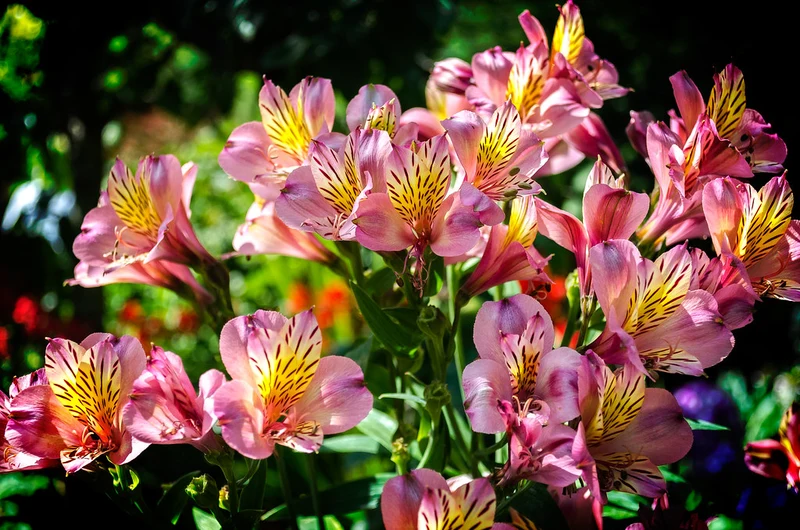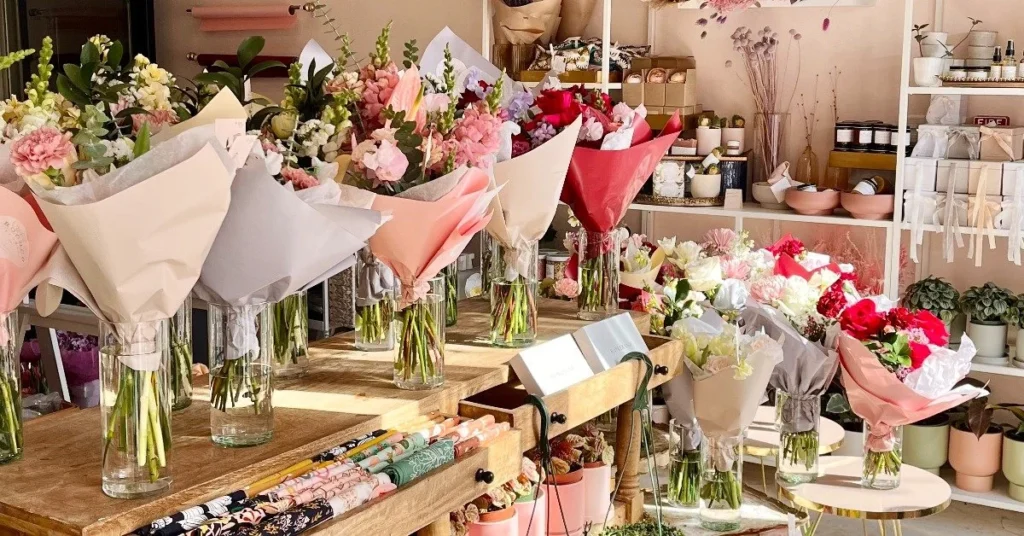Introduction to Alstromeria
Imagine a garden bursting with color, where vibrant hues dance in the sunlight and delicate blooms sway gently in the breeze. Enter Alstromeria, often known as the Peruvian lily or lily of the Incas. This stunning perennial not only adds a splash of beauty to your outdoor space but also brings unique charm and character that few plants can match.
With its rich history and an array of varieties, They offers something for every gardener. Whether you’re looking to create breathtaking floral arrangements or simply enhance your garden’s aesthetic appeal, these resilient flowers are sure to impress. Let’s dive deeper into why you should consider adding Alstromeria to your planting plans it might just be the perfect addition you’ve been searching for!
History and Origin of Alstromeria
Alstromeria, often called the Peruvian lily, boasts a rich history intertwined with culture and nature. Native to South America, this vibrant flower originates primarily from regions like Chile and Peru.
The plant’s enchanting blooms captured the attention of early explorers who documented its striking colors and unique patterns. Over centuries, Alstromeria has become synonymous with beauty in gardens around the world.
In the late 19th century, these flowers made their way to Europe after being introduced by botanists. The delicate petals quickly gained popularity among gardeners for their charm and resilience.
Today, it is not just admired for its aesthetics but also celebrated for its symbolism of friendship and devotion in various cultures. Its legacy continues as it thrives in diverse landscapes globally, effortlessly captivating hearts with every bloom.
Types of Alstromeria Plants and How to Choose the Right One
Alstromeria comes in a stunning variety of types, each with its own charm. The most common are the Peruvian lilies, known for their vibrant colors and striking patterns. These plants bring life to any garden.
Other varieties include the Brazilian Alstromeria, which boasts unique foliage and blooms that can handle warmer climates. This makes them perfect for those living in hotter regions.
When choosing the right Alstromeria plant for your space, consider factors like climate and soil type. Some thrive in full sun while others prefer partial shade.
Think about color too; from soft pastels to bold hues, there’s an option to match every aesthetic. Look at growth habits as well some varieties spread quickly while others remain compact.
Researching these details will help you select the perfect plant to enhance your garden’s beauty and vibrancy effortlessly.
Unique Features of Alstromeria Varieties

It also known as Peruvian lily, boasts a vibrant palette that captures the eye. Its blooms come in shades ranging from fiery reds to soft pastels. Each variety brings its own character, making them perfect for various garden aesthetics.
The petals often exhibit intricate markings and patterns, adding an artistic touch. Some varieties possess delightful fragrance that attracts pollinators like bees and butterflies.
Another unique feature is their long-lasting blooms. Once cut, This flowers can remain fresh for up to two weeks in a vase. This longevity makes them favorites among florists and gardeners alike.
Additionally, it has a sturdy structure with lush green foliage that complements any flower arrangement or garden bed seamlessly. The combination of resilience and beauty makes these plants truly special in the world of horticulture.
Growing and Caring for Alstromeria Plants
Growing Alstromeria is a rewarding experience. These vibrant flowers thrive in well-drained soil with plenty of sunlight. Aim for at least six hours of direct sun each day.
Watering is crucial but keep it moderate. Let the top inch of soil dry out between waterings to prevent root rot. Mulching can help retain moisture and suppress weeds.
Fertilizing every few weeks during the growing season will encourage healthy blooms. Use a balanced fertilizer to support their growth without overwhelming them.
Pruning spent flowers encourages more blooms throughout the season. Remove faded stems close to the base, promoting new growth and keeping your garden looking tidy.
Watch for pests like aphids or spider mites, as they can occasionally appear. Regularly inspecting your plants helps catch any issues early on before they escalate into larger problems.
Common Uses for Alstromeria in Floral Arrangements
Alstromeria, often called the Peruvian lily, is a popular choice for floral arrangements. Its vibrant colors and striking patterns add a dynamic touch to any bouquet.
These blooms are versatile. They can stand alone in simple bunches or blend beautifully with other flowers like roses and lilies. The long-lasting nature of Alstromeria makes it perfect for both fresh bouquets and dried arrangements.
Florists appreciate its ability to complement various styles. Whether used in elegant wedding centerpieces or casual garden-inspired displays, Alstromeria shines in every setting.
Its unique shape creates visual interest. Plus, the variety of shades from soft pastels to bold reds allows for endless creative possibilities when designing floral pieces.
With their resilience and easy care requirements, these flowers remain a favorite among decorators looking to make an impact without excessive maintenance.
Benefits of Growing Alstromeria in Your Garden
Growing Alstromeria in your garden offers a plethora of advantages. These vibrant flowers bring stunning colors to any landscape, blooming from summer through autumn. Their variety means you can enjoy different hues and patterns, enhancing visual interest.
Alstromeria is not just beautiful; it’s also remarkably hardy. They thrive in various climates and soil types, making them perfect for both novice and experienced gardeners alike. Once established, these perennials require minimal maintenance.
Pollinators love Alstromeria too! Bees and butterflies are drawn to their nectar-rich blooms, promoting biodiversity in your garden space. This makes your garden not only more lively but also ecologically beneficial.
Moreover, cut Alstromeria stems last long in floral arrangements, bringing nature indoors effortlessly. With its resilience and visual appeal, adding this flower can transform ordinary gardens into extraordinary spaces filled with life and color.
Tips for Growing and Maintaining Alstromeria
Growing Alstromeria requires attention to a few key factors. Start by selecting a spot with well-draining soil and full sun exposure. These vibrant flowers thrive in bright light, which encourages their lush blooms.
Watering is essential but be cautious not to overdo it. Allow the top inch of soil to dry out between waterings. This helps prevent root rot while keeping your plants hydrated.
Fertilization can boost growth significantly. Use a balanced fertilizer during the growing season every four to six weeks for optimal results.
Deadheading spent blooms promotes new growth and prolongs flowering periods. Simply pinch or cut off wilted flowers at their base.
Watch for pests like aphids or spider mites, as they can affect plant health. Regular inspection allows you to tackle issues early on, ensuring your Alstromeria flourishes beautifully throughout the seasons.
Creative Ways to Use Alstromeria in Your Garden and Home Decor
Alstromeria, with its vibrant colors and diverse shapes, offers endless possibilities for creativity. Try planting these stunning flowers in mixed borders. Their tall stems create a striking backdrop for shorter perennials.
Consider using Alstromeria in container gardens as well. Arrange them alongside trailing vines or ornamental grasses for added texture and depth.
For home decor, cut fresh blooms and place them in unique vases think vintage jars or rustic pitchers. This brings a touch of nature indoors while showcasing their beauty.
Dried Alstromeria can serve as an eye-catching addition to wreaths or garlands. Incorporating them into seasonal decorations adds color year-round.
You might even explore using Alstromeria petals to make natural confetti for special occasions; they lend a chic flair that’s eco-friendly too!
Common Issues and How to Solve Them
Alstromeria plants are generally hardy, but they can face a few challenges. One common issue is root rot, often caused by overly wet soil. To prevent this, ensure your plants have well-draining soil and avoid overwatering.
Pests like aphids or spider mites may occasionally invade. Regularly inspecting the leaves and stems helps catch these pests early. A gentle spray of water or a natural insecticidal soap can effectively manage them.
Powdery mildew can be another concern in humid conditions. Providing good air circulation around your plants and watering at the base rather than from above can help reduce humidity levels on the foliage.
If you notice yellowing leaves, it might indicate nutrient deficiencies or poor drainage. Amending your soil with organic compost not only enriches nutrients but also improves drainage for healthier growth.
Conclusion:
Adding Alstromeria to your garden is a decision that brings both beauty and versatility. These stunning flowers, often referred to as Peruvian lilies, can elevate any landscape with their vibrant colors and unique patterns. Their rich history adds depth to your gardening experience, while the variety of species and cultivars allows for creative expression in garden design.
Alstromeria plants are known for their resilience. With proper care, they thrive in different settings from borders to containers making them an excellent choice for gardeners of all skill levels. The blooms not only attract pollinators but also serve as beautiful cut flowers that brighten up any indoor space.
With such numerous benefits including long lasting blooms and low maintenance it’s clear why many choose Alstromeria for their gardens. Whether you want a pop of color or a plant that complements other flora, Alstromeria fits seamlessly into any arrangement.
Choosing the right type suited to your specific gardening conditions ensures success. And once planted, you’ll find joy in observing how these fantastic flowers evolve through the seasons.
If you’re seeking creativity beyond traditional planting methods, think about incorporating Alstromeria into home decor or special occasions; its elegance never goes unnoticed.
Consider adding this remarkable flower variety today your garden will thank you later with bursts of color and life throughout the growing season.
ALSO READ: Discover Hidden Gems: Highlights from MyFavouritePlaces.org



